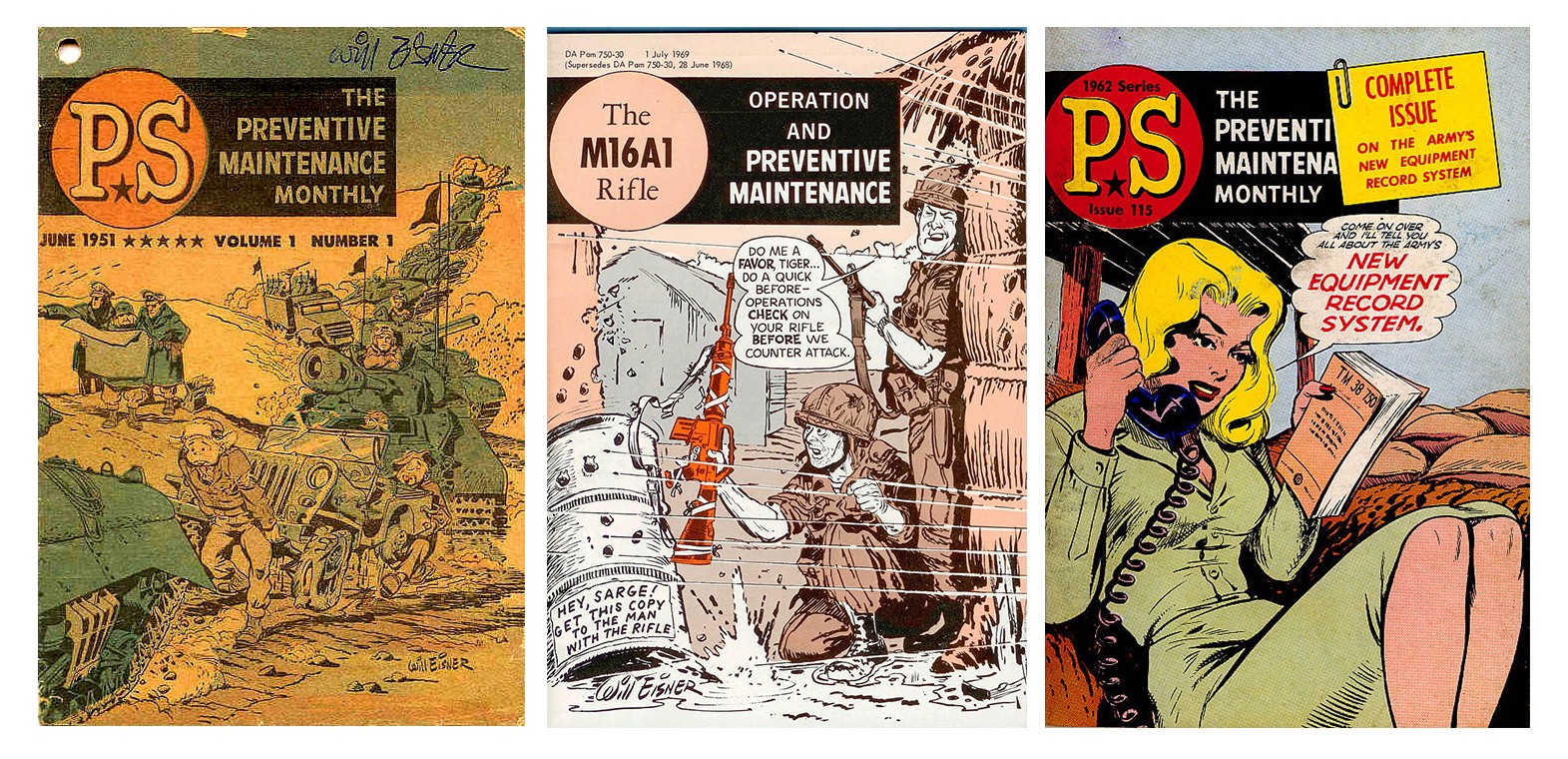A Brief History of “PS Magazine” and Its Significance

“PS Magazine” has played a crucial role in the United States military for more than 70 years. Originally created to help soldiers properly maintain their equipment, the publication is an essential tool for educating not only Army engineers but also manufacturing professionals on the importance of peak-performance equipment.
The magazine’s history is rich, with countless contributions from some of the most talented cartoonists, writers, and editors of their time. Let’s explore the history and significance of “PS Magazine,” from its origins in World War II to its continued importance in the modern era.
The origins of “PS Magazine”
“PS Magazine: The Preventive Maintenance Monthly” traces its roots back to World War II. Originally called “Army Motors,” the magazine began gaining notoriety and popularity around 1944, when established comic writer and illustrator Will Eisner was assigned to the magazine, bringing the character of Joe Dope along with him.
Eisner’s comics, featuring Joe Dope — a hapless soldier who ignored preventive maintenance practices — and his cast of characters, dealt with topics to which military personnel could relate. In 1951, at the outbreak of the Korean War, Eisner created a replacement magazine for “Army Motors” called “PS: The Preventive Maintenance Monthly.” It had a new goal: to improve maintenance practices.
In its new format, the magazine became a full-fledged comic book, illustrating educational concepts and timely issues. Soldiers loved it from the start.
“PS Magazine” through the years
As the dust settled from WWII and the Korean War, “PS Magazine” remained popular, with soldiers still wanting to read and learn about preventive maintenance concerns. Joe Dope remained a central character month after month, illustrating the pitfalls of neglecting preventive maintenance.
Each month’s single-frame comic, “Joe’s Dope Sheet,” contained simple limericks and reminders intended to help maintenance professionals keep their equipment in good working condition. By reinforcing the importance of preventive maintenance checks and services, “PS Magazine” empowered maintenance personnel to ensure vehicles and equipment were always ready for use when needed.
The magazine eventually expanded outside the armed forces, as Army-trained mechanics and engineers took it with them to private-sector jobs. Today, the publication is still widely recognized as staple reading wherever equipment maintenance is performed.
“PS Magazine” remains a force for education
For more than 60 years, “PS Magazine” has supported preventive maintenance through an ingenious combination of entertaining and informing (infotainment). Soldiers still refer to the magazine to understand the latest trends and best practices for keeping equipment maintained. Decades of continuous publication highlight the usefulness of cartoons and sequential art as educational mediums.
“PS Magazine” remains a reliable official Army publication. Readers continue to discover how preventive maintenance is preferable to equipment breakdowns — and good preventive maintenance practices play a big part in reducing costs. This lesson can be applied to any industry where equipment reliability is paramount, giving businesses the best bang for their buck at the least expense, in both money and time.
